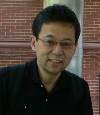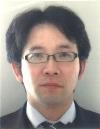Day 2 :
Keynote Forum
David C. Jackson
The University of Melbourne, Australia
Keynote: How to elicit immediate and long-term immunity against influenza
Time : 10:00-10:30

Biography:
David Jackson has been an active researcher in immunology and immunochemistry over the last 40 years. His research efforts are now focused on the design, assembly and evaluation of innovative vaccines which have led to pre-clinical and clinical evaluation of vaccine candidates for influenza, hepatitis C virus, Group A streptococcus, Mycobacterium tuberculosis and human papilloma virus. He has also developed candidate vaccines against methamphetamine and cocaine and against the reproductive hormone luteinizing hormone releasing hormone. He has trained more than 50 graduate, postgraduate, doctoral and postdoctoral scholars and published more than 200 original research papers, invited reviews and book chapters in immunology, chemistry, biochemistry and vaccinology. He was one of the founders of the Cooperative Research Centre for Vaccine Technology and is senior inventor of a number of patents with licenses issued to the pharmaceutical industry. One of his inventions resulted in a first-in-man clinical trial of a synthetic epitope-based vaccine against hepatitis C virus. He is co-founder of 2 start-up biotechnology companies both of which are based on his own inventions. In the last five years his work has attracted more than twenty million dollars in research grants from nationally and internationally competitive sources, industry and investors. He is a Senior Principal Research Fellow with the National Health & Medical Research Council of Australia, a Professor in The University of Melbourne and a Chief Investigator of an NH&MRC Program Grant. In 2014 he was appointed Distinguished Professor in Hokkaido University, Japan.
Abstract:
When delivered intranasally a single dose of the TLR-2 agonist S-[2,3-bis(palmitoyl oxy)propyl] cysteine (Pam2Cys) affords up to 99% reduction in viral loads in the lungs of mice challenged with influenza virus strains of moderate virulence and significantly reduces weight loss and mortality following challenge with highly virulent virus strains. The effect is immediate, occurring in the first day of exposure, and is achieved with a single dose of Pam2Cys. Mice treated with Pam2Cys and subsequently challenged with influenza virus also demonstrate lower rates of contact transmission when compared to naive mice. The anti-viral activity is antigen independent and associated with activation of the innate immune system through Pam2Cys-dependent recruitment of neutrophils, macrophages and soluble factors including IL-6, IL-10, IFN- ï§, MCP-1 and TNF-ï¡ into the pulmonary tract. The findings indicate that Pam2Cys is a novel anti-viral agent that can reduce both the severity of influenza infection, as well as the potential to transmit disease. An influenza vaccine formulated with Pam2Cys provides a similar immediate anti-viral effect but in addition provides anti-influenza antibodies cross reactive with the homologous, immunising strain, but also long-term heterotypic subtype immunity through the induction of cross-reactive CD8+ cytotoxic T cells. Vaccines formulated with Pam2Cys therefore would be suitable for use during influenza pandemics providing both an immediate anti-viral effect and long-term immunity. Finally, treatment with Pam2Cys also affords protection against secondary bacterial infection providing an option for the prevention of the secondary bacterial infections that often complicate the outcome of influenza.
Keynote Forum
Agnieszka Sirko
Polish Academy of Sciences, Poland
Keynote: Development of DNA vaccine against H5N1 avian influenza virus
Time : 10:30-11:00

Biography:
Agnieszka Sirko is a Professor at the Institute of Biochemistry and Biophysics Polish Academy of Sciences in Warsaw, Poland. Her group is involved in work related to development of DNA vaccine against influenza virus and, in cooperation with other groups, in development of the modern, sensitive and reliable methods of influenza virus detection. She is a member of Polish Vaccine Consortium (PVC).
Abstract:
DNA vaccines, also called genetic vaccines, belong to a new generation of vaccines. It is known that DNA injection in the form of a plasmid or in a linear form may lead to induction of an immunological response against antigens coded by the vaccine used. The level of this response, important because of providing protection using the vaccine, depends on many factors. In addition to selection of an adequately strong antigen, ensuring its efficient expression in cells of the immunized body plays a key role. Various strategies are used in order to increase efficiency of DNA vaccines. They are related to modifications of expression cassette, use of various adjuvants, both biological and chemical adjuvants, use of various carriers, various administration routes or immunization in combination with other vaccines. The overview of the approaches used in our laboratory to improve the efficacy of the DNA vaccine against H5N1 virus will be presented. The basal construct used in our work encodes the full length H5 HA, however we have introduced modifications inside and outside of the HA coding region. The efficacy of several variants of such DNA vaccine was tested in two model animals, mice and chickens along with several different adjuvants. In many cases we have observedenhanced expression of the HA antigen and an improved immunological response to the vaccine.
- Track 3-Antiviral drug development and treatment strategies, including vaccination, Track 9- Strategies for Developing New Antiviral Flu Drugs, Track 12- Vaccines: current and novel approaches
Session Introduction
Masayuki Noguchi
Hokkaido University, Japan
Title: Inhibition of Akt kinase activity suppresses entry and replication of influenza virus
Time : 11:15-11:40

Biography:
Prof. Masayuki Noguchi has completed his PhD in the year 1999 from Jikei University of Medicine. He is the Professor in Division of Cancer Biology, Institute for Genetic Medicine, Hokkaido University, Sapporo, Japan. He was the member of American Society of Microbiology in the year 2000 and also editorial board member for Journal of Bio Chemistry. He has published more than 70 papers in reputed journals.
Abstract:
The possibility of the pandemic spread of influenza viruses highlights the need for an effective cure for this life-threatening disease. Influenza A virus, belonging to a family of orthomyxoviruses, is a negative-strand RNA virus which encodes 11 viral proteins. A numbers of intracellular signaling pathways in the host cells interact with influenza, the viral proteins, which affect various stages of viral infection and replication. In this study, we investigated how inhibition of Akt kinase activity impacts on influenza virus infection by using “Akt-in”, a peptide Akt inhibitor. In PR8 influenza-infected A549 cells, Akt interacted with the NS1 (Non-structural protein1), and hence increased phosphorylation of Akt kinase activity and NS1. Treatment of cells with either “TCL1- or TCL1b-based Akt-in” efficiently suppressed Akt kinase activity while decreasing the levels of phosphorylated NS1; this, in turn, inhibited viral replication in a dose- and time-dependent manner. The inhibitory effect on viral replication appears to not be due to inhibition of the production of inflammatory cytokines, including IL-6 and IL-8, in the host cells. Inhibition of Akt kinase activity in the host cells inhibited the efficiency of viral entry, which is associated with decreased levels of phosphorylated glycogen synthase kinase 3, a substrate of Akt. Further, Akt-in treatment of the host cells, which inhibited Akt kinase activity, modestly enhanced induction of autophagy. Taken together, inhibition of Akt kinase activity in host cells may have therapeutic advantages for influenza virus infection by inhibiting viral entry and replication.
Anthony S. Gilbert
hVIVO, UK
Title: ‘The Human Viral Challenge Model – Accelerating Antiviral and Vaccine Development’
Time : 11:40-12:05

Biography:
Dr Gilbert lends a unique blend of medical expertise, both from his clinical experience in the UK’s National Health Service and from his clinical research background. His professional activities have included work in infectious diseases, vaccine development and antiviral research. His virology research includes work in Influenza, RSV and HRV. Having led numerous studies in London's teaching hospitals to International Conference on Harmonisation - Good Clinical Practice (ICH-GCP) guidelines, Dr Gilbert brings a wealth of clinical research experience to Retroscreen Virology. For over a decade, Dr Gilbert has played an important role in the development of the Human Viral Challenge Model at Retroscreen Virology. As a Principal Investigator, Dr Gilbert has supervised and conducted viral challenge studies in order to further the quest to bring safer and more effective vaccines and antivirals to the global community. The research has been published in several medical and scientific journals, including ‘Nature Medicine’. Dr Gilbert obtained his Bachelor of Medicine and Bachelor of Surgery degree from the University of the Witwatersrand, Johannesburg. He is a member of the Institute of Clinical Research. He has served as an expert member and Alternate Vice Chair of a National Research Ethics Service (NRES) committee, having been appointed by the Health Research Authority in the United Kingdom.
Abstract:
For over a decade, Human Viral Challenge Studies have successfully been conducted at Retroscreen Virology to develop a series of well-characterised virus stocks, whilst demonstrating that the Human Viral Challenge Model (VCM) could be effective in offering clients a faster and cost effective route to market for their therapeutics. The Human Viral Challenge Model enables global pharmaceutical and biotechnology companies, as well as leading academic groups and government institutions, to undertake scientific research, accelerate the drug development timeline and reduce the cost of bringing antiviral drugs, vaccines and diagnostics to market. The VCM also enables fundamental research into the human response to infection and crucial research into modes of infection and transmission between individuals in the community. By monitoring the entire disease lifecycle as subjects move from healthy to sick and recover back to healthy again, we can obtain high quality, longitudinal data from the before, during and after phases of disease. The model can be used to study the efficacy of new therapies and also to study the target disease itself. As Retroscreen Virology has grown and developed, the VCM has become widely accepted as an alternative to traditional early stage field trials to show the efficacy of antiviral or vaccine therapeutics in Influenza, RSV and HRV.
Takahiro Haruyama
Nagasaki University, Japan
Title: Effective defense activity of Honey against influenza virus infection: The combination with neuramidase inhibitors.
Time : 12:05-12:30

Biography:
Takahiro Haruyama has completed his PhD at the age of 38 years from Tsukuba University and studies as assistant professor in Laboratory of Molecular Biology of Infectious Agents, Graduate School of Biomedical Sciences, Nagasaki University. He has published more than 10 papers in international journals.
Abstract:
To control influenza virus infections are one of urgent global issues. In the replication of influenza viruses, the mutants are frequency generated because of the high mutation rate of its RNA dependent RNA polymerase. Even if effective therapeutic agents have been developed, drug-resistant viruses easily emerge and spread all over the world in the blink of an eye. Actually, a large number of resistant viruses against neuraminidase (NA) inhibitors had already been isolated from clinical specimens. In order to respond to the current situation, continuous development of the new antiviral drugs is required. We constructed an in vitro cell-based screening system for anti-influenza virus activities and detected potent anti-influenza virus infection in natural products. We found potent anti-influenza virus activities in “Honey”, and it was suggested that the active components in honey is methylglyoxal (MGO). The mechanism of Honey and MGO against influenza virus was virucidal. Thus we tested the combination activity of Honey or MGO with NA inhibitors. It was confirmed that Honey or MGO synergistically inhibit Influenza replication thus in the presence of low concentration of Honey or MGO IC50 of NA inhibitors lowered up to 1/100 of NA inhibitors alone. However, our results revealed that honey has potent inhibitory activities against influenza virus infection, demonstrating a potential medicinal value as a good partner for current NA inhibitors. Combination of multiple drugs for inhibition of Influenza virus replication could be effective as HAART treatment in AIDS.
Bao-Zhong Wang
Emory University School of Medicine, USA
Title: Novel coated nanoclusters from structure-stabilized influenza H7N9 HA induce enhanced protective immunity
Time : 12:30-12:55

Biography:
Bao-Zhong Wang has completed his PhD in the year of 2003 from Shanghai Institute of Biochemistry, Chinese Academy of Sciences, Shanghai, China. He is an Assistant Professor in the Department of Microbiology and Immunology, Emory University School of Medicine. He has published more than 35 peer viewed papers.
Abstract:
Nanoparticles from antigenic proteins are highly immunogenic because of the novel quality brought from their particulate structures. We developed a two-step procedure to generate protein nanoparticles (nanoclusters) from recombinant trimeric structure-stabilized H7N9 HA (stHA). These nanoclusters have an average diameter of 273.6 nm with a similar Zeta potential to the soluble protein, demonstrating the their comparable solution stability. In a dendritic cell culture, these nanoclusters were reactive to upregulate the CD86 expression and stimulate the production of TNF-α. To evaluate the immunogenicity of the nanoclusters, mice were immunized with either intramuscular (i.m.) or intranasal (i.n.) route. We found that these nanoclusters induced extremely high levels of serum IgG with high neutralization activity as well by i.m route. One i.m. immunization with 10µg of the nanoclusters provided complete protection against a 10 LD50 live H7N9 virus challenge with slight bodyweight loss decreases. Two immunizations with either i.m. or i.n. route protected immunized mice against virus challenges without any disease symptoms. Systemic antibody responses were found to be durable up to six month: IgG levels were not significantly different in the first three months but dropped in six months. However, the neutralization activity and hemagglutination inhibition (HAI) titers were not dropped significantly, demonstrating the durability of the protective antibodies. Because of the high immunogenicity and time-efficient egg-independent production (a few weeks not several months), stHA nanoclusters have potentials to be developed into a new generation of influenza vaccines, particularly for fighting an emerging influenza pandemic.
Jaap Goudsmit
Janssen Prevention Center, The Netherlands and USA
Title: Universal pandemic and seasonal Influenza vaccine design: directing the antibody repertoire
Time : 12:55-13:20

Biography:
Jaap Goudsmit is Global Head of the Janssen Prevention Center, a Center of Excellence launched at the start of 2015 within Janssen Research & Development, part of the Pharmaceutical Companies of Johnson & Johnson. In this role, he is responsible for driving the development and implementation of innovative strategies for disease prevention, focusing on the chronic, non-communicable illnesses that are on the rise in our aging populations. He joined the Janssen R&D Senior Leadership Team on January 1, 2015.
Abstract:
Seasonal Influenza vaccines have a variable and limited breadth of protection primarily due to the dominant dependence on the induction of hemaglutination inhibiting (HAI) antibodies. HAI antibodies bind to the head of the hemaglutinin (HA) molecule. We discovered somatically mutated antibodies of the VH1-69 lineage to the stem of the HA molecule shortly after influenza vaccination. These antibodies were broadly protective against influenza group A1, A2 and B viruses, in case of influenza A due to virus neutralization (fusion inhibition) and in case of B viruses due to antibody-dependent cellular cytotoxicity (ADCC). Comparing the CR9114 epitope (Dreyfus et al, Science 2012) with epitopes of HIV and HCV binding to antibodies of the VH1-69 lineage, attachment to the antigen is largely defined by a conserved hydrophobic CDR2 region. Subsequently we developed a HA stem trimer with the capability to tightly bind to a Fab of CR9114. The paratope of CR9114 was shown to bind to the HA stem trimer in a similar way (CDR3 & CDR2 dominance) as to full length HA. The HA stem trimer protected mice completely against both H1N1 and H5N1. In cynomolgus monkeys, the HA stem trimer reduced fever following H1N1 challenge and elicited broadly reactive stem-directed antibodies. These data provide proof-of-concept for design of an universal influenza vaccine based on directing the antibody repertoire.
